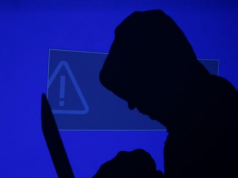
MANILA – Before the Maute siege began May 23, the military had confronted the Maute Group for weeks in other parts of Lanao del Sur, but the extremists’ campaign to take over the progressive Islamic city – with an eye to courting full recognition from the Islamic State – was obviously made with “unlimited” firepower and advanced weaponry.
This was the observation given lawmakers by a commanding officer of an Army unit that is seeing action in Marawi City, as members of both chambers of Congress met in joint session Saturday to tackle President Duterte’s bid to extend martial law in Mindanao until Dec. 31, 2017. Congress voted to grant the 150-day extension, with 261-18 of the total of attendees from both Senate and the House of Representatives.
The unit of 1Lt. Kent Fagyan, commanding officer of the 15th DRC, of the Army’s 1st Infantry Division, 1st ID PA, was among the first sent to confront the Maute group in Marawi when some 200 members descended on the city, and laid siege to it. He witnessed them occupy the poblacion and raise the ISIS’ black flag.
Weeks before that, his unit was also among those deployed by the military to root out the Maute members from their lairs in Butig, Lanao del Sur.
Fagyan himself was also the veteran of a much earlier siege, in Zamboanga in 2013, when he was platoon leader at the 44th IB.
‘Maute better armed in Marawi’
“Comparing sa mga previous encounters with the Maute Group saka dito sa Marawi, upgraded po yung dito sa Marawi kasi meron na po silang, maraming 50 calibre, may radio frequency scanner, may drones saka parang unlimited yung bala nila [Compared to our previous encounters with the Maute Group, we noticed they had upgraded their weaponry: they had lots of 50 caliber rifles, radio frequency scanners and drones. Their bullets seemed unlimited],” said Fagyan, who was presented by security officials called in to brief Congress Saturday on the status of the anti-Maute campaign before the lawmakers tackled the martial law extension.
The 29-year-old officer had a sling on one arm, having been wounded in one encounter.
Besides the vastly “upgraded” weaponry of the Maute Group, Fagyan said government troops also had a much more difficult time – compared to the Zamboanga siege – because most of the homes and buildings where the skirmishes took place since May 23 were made of solid concrete and had 3, even 4 floors.
The Maute Group took defensive positions in most of these fortified buildings, just waiting for soldiers to come out and then pick them out one by one. “So yung Maute Group kung lalabas kami, ang gagawin lang nila titirahin kami, so kailangan naming dahan-dahan talaga.”
From darting about corner by corner, block by block, the soldiers would then enter certain houses and buildings to check for the presence of extremists or civilians stranded by the fighting.
“So hindi kami kailangang magpakita sa mga kalsada kasi titirahin kami. So kailangan naming butasin yung mga pader; dun kami papasok, and then sa mga bahay naman magkakalapit [So we don’t expose ourselves on the streets as they will hit us. We’d often bore holes through some houses and then get through those holes.]”
They would use those homes to monitor for the enemy’s presence and possible resistance before moving in to another location. If they sense resistsnace they would use tear gas or, if resistance is quite strong, grenades.
Going floor by floor and room by room was hard “because the enemy knew those places well; for every area they had a vantage position,” said Fagyan, speaking mostly in Filipino.
At one point, a comrade of his sat on a chair and sensed something hard beneath, which turned out to be an improvised explosive device (IED). “Mercifully, it did not explode. And then, in the next house, which the Maute Group had abandoned, they also put IEDs, so we were always very observant.”
They tried everything to avoid casualties, but it was tough going every step of the way. “Mahirap talaga yung ginagawa namin. As much as possible iniiwasan namin na may casualty sa amin pero magaling din po yung kalaban, so ‘yun po yung ginagawa namin.”
The extremists took dozens of civilians, some of whom earlier claimed they were forced to do chores for the Maute Group, and some were summarily executed.
Fagyan said their unit bumped into several unarmed civilians, and their SOP was to quickly interrogate them to make sure they were not deliberately planted by the enemy.
He said most of those in his unit had been in training for one month, and subsequently were deployed in Marawi the past two months. That means they had not gone home the past three months, but that “kahit stressed kami ginagawa namin yung trabaho namin [even though we are stressed we tried to do our job] to liberate Marawi.”
Fagyan thanked all those who reached out to the soldiers with both material and moral aid.
“Sa konting pagbigay nyo ng damit, tubig, malaking bagay na po ‘yun kasi doon hindi ka makakain sa tamang oras, hindi ka makatulog kasi putok dito putok doon, almost 24 hours na [The clothes, water and other stuff you gave meant so much to us because out there we rarely ate on time, we couldn’t sleep because of the constant sound of gunfire].”
Sen. Richard Gordon praised Fagyan for his courage and patriotism.
“I just want to commend you for your bravery,” Gordon said, noting, “that is to hard to bear for a 29-year-old . . . to fight and see your brothers fall dead or to fight your fellow Filipinos . . . so you don’t find pleasure [in] it, hindi ka natutuwa, nahihirapan ka [killing them doesn’t make you happy; it’s hard].”









